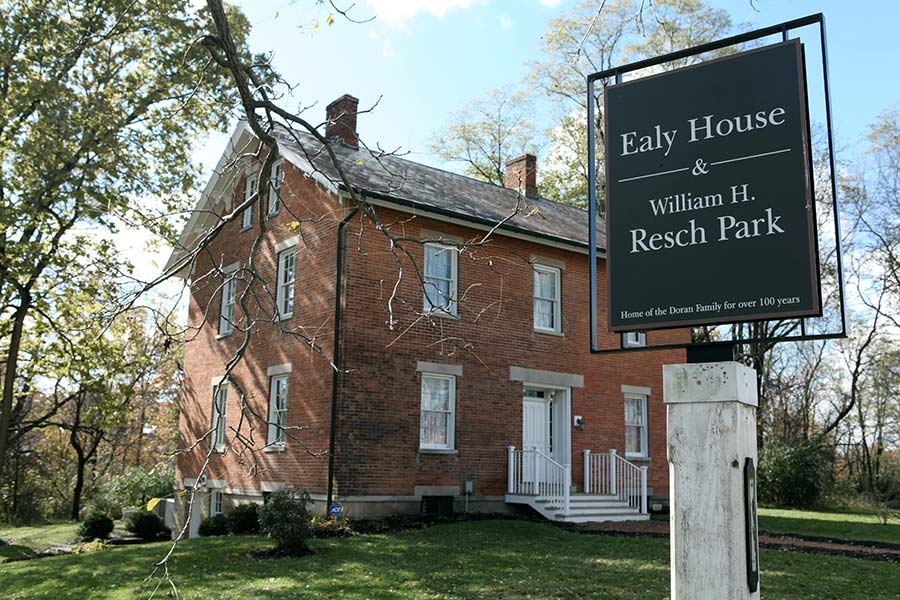John Henry died in 1845. His will left all of his land to his son George and half-interests in his mill to George and his brother Peter. Other siblings in other ways found footing in the Township’s agrarian-entrepreneurial class. In time George felt ready to follow a pattern familiar to those who were prosperous like himself, namely, to build a substantial brick dwelling.
In 1860 he wrote with a pencil on an attic wall the names of the craftsmen (“workhands”) who were building or had just finished building the Ealy House. Their names are well known to the Historical Society: for example, the Beecher family of carpenters who moved in about the time New Albany was founded; the Schott family of masons who moved from Columbus’ German Village to Plain Township in 1850. The fine quality of local craftsmanship is part of the historical significance of the house as is the house’s architectural style, a transitional one between neo-classical and Victorian. The house’s solid composition and appearance might make one think they resulted from the owners’ German descent and the sense of proportion peculiar to its German-immigrant masons.
Some of the workmen went off to fight in the Civil War soon after George wrote their names on the attic wall, another historical association the Ealy House has. The Ealys themselves contributed. George’s brother Daniel and his three sons, Peter, Henry, and Martin, all enlisted. Peter, who died at the age of thirty-two, seems to have experienced shell shock. His wife in a petition claimed that Peter suffered from “acute mania.”
Restoration of the Ealy House was carried out in accordance with the Department of the Interior’s guidelines. Mortar used in tuck pointing, for example, is the same as that used originally.











